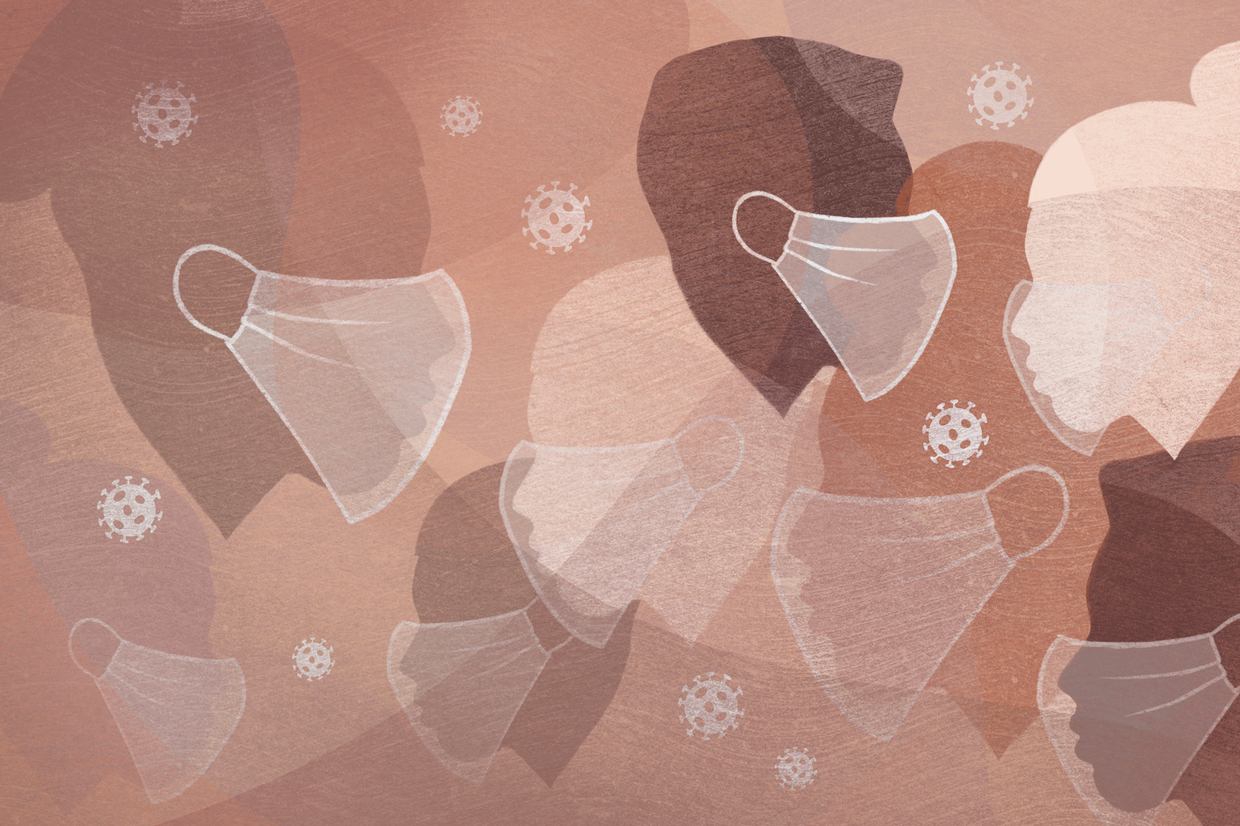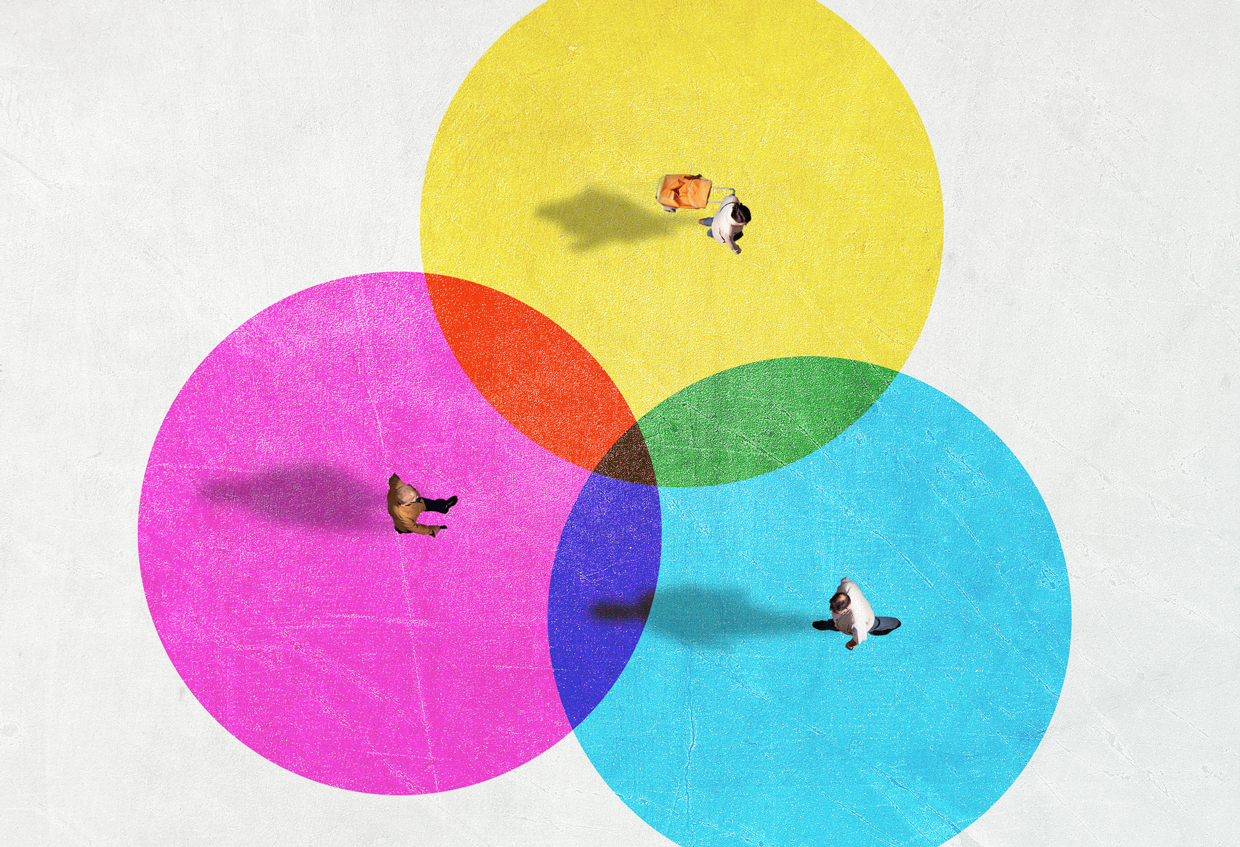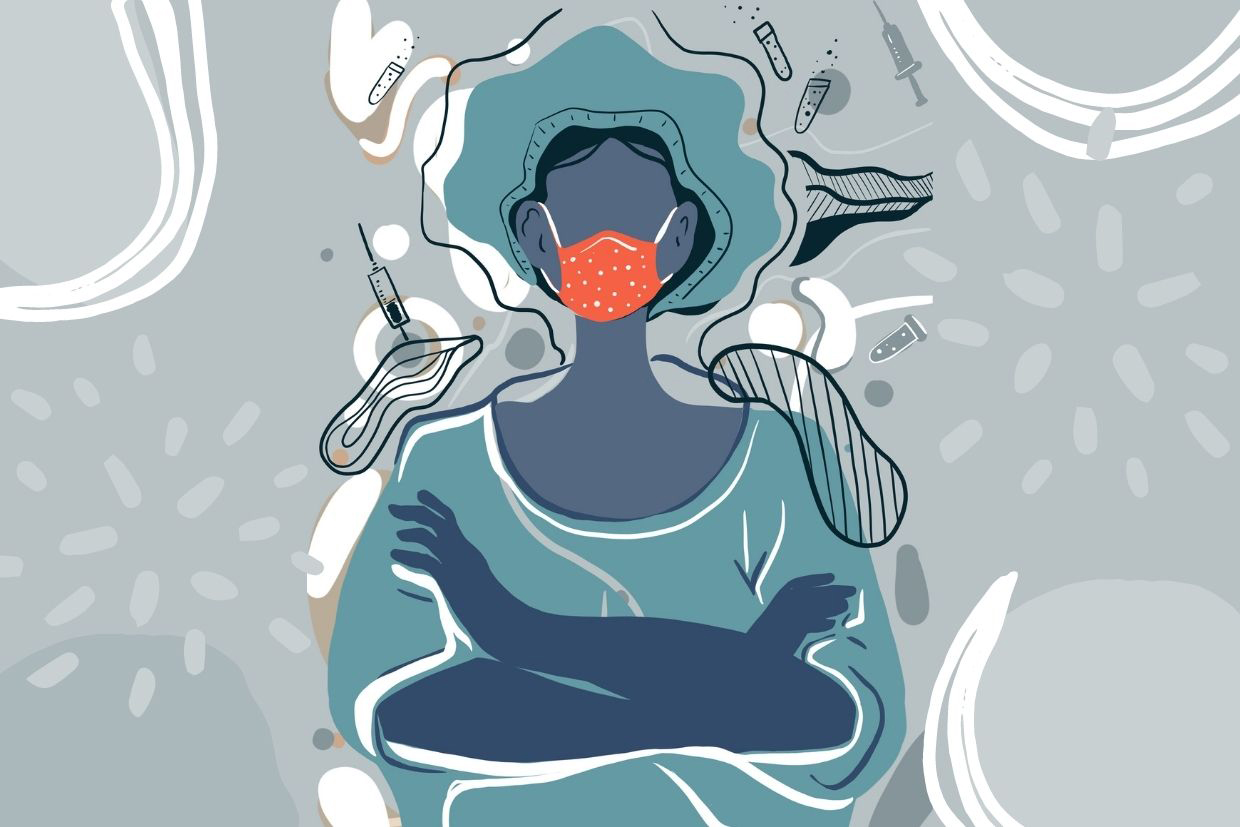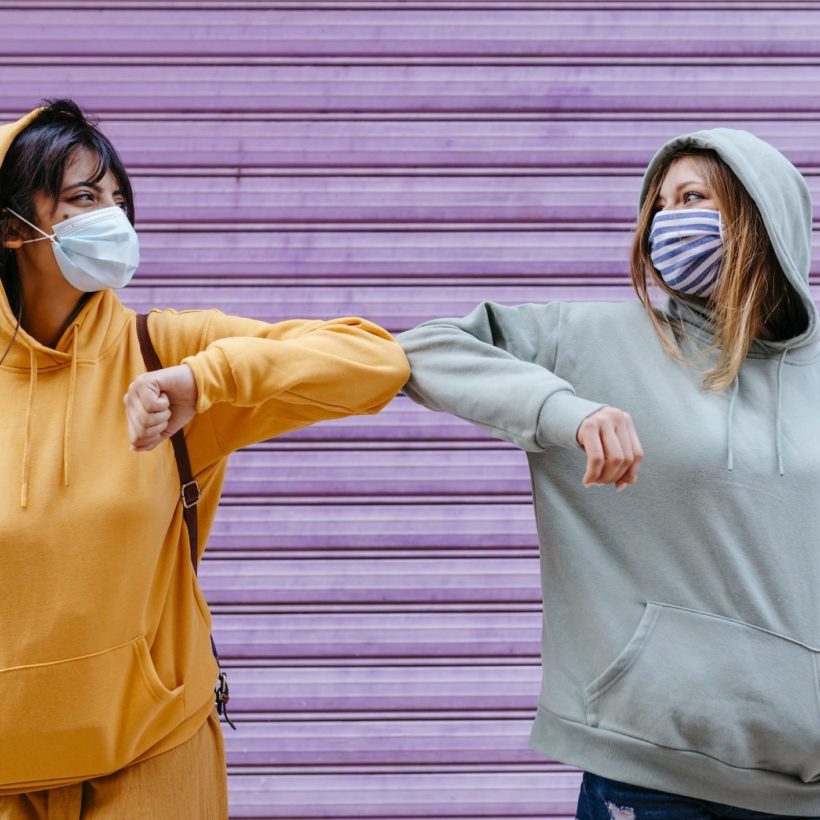It’s almost been two years since COVID-19 took hold of everything we ever knew. At first, it forced the world into lockdown — attempting to mitigate the spread and casualties associated with the virus. Like wildfire, COVID quickly became a global pandemic, and though the harshest of restrictions are a thing of the past, our lives have been forever changed.
Having now just emerged from quarantine and isolation (my husband and I were both recently infected and are okay now), I find myself grateful for my health and, in a weird way, grateful for “getting it over with,” eager to get on with life.
But is that even how it works anymore? Re-infection seems to be happening more and more. What is going on?
More than half my daughter’s life has been under COVID’s hold. Wearing a mask wasn’t hard for her at this point — it’s all she really knows. We’ve barely experienced birthday parties, have missed vacations, spent months without seeing any other family, have spent WAY too much time in our small apartment, and managed the best we could with broken routines and lack of consistency (which is really hard on a toddler, and parents!) We’ve done our absolute best to follow every rule — every recommendation.
In fact, us being “too cautious” has caused much tension between some family members and friends.
It’s hard not to be frustrated. But then I feel guilty for thinking about it. Because all of that is moot when I remind myself that COVID has also ravaged so many lives, we should be (and are) grateful. But it’s complicated.
So now I reflect on what brought us to this point, from March 2020 to March 2022.

We’ve rolled with the punches, the closures, the stay-at-home orders, working from home, having no childcare options, the ups and downs associated with the lack of routine and consistency. No matter how many times I tried to tell myself, “control the controllable,” it’s hard. I can’t say, “I’m over it.” Because I’m not.
I am still responsible, dedicated to keeping my family as healthy as I can and caring about keeping others safe. But I’m also just about one more exposure notification, 10-day classroom closure, or one more delay in the under-5 vaccine research away from losing my mind. And, I know I’m not the only one.
COVID fatigue is, in fact, real. So I spoke to experts Dr. Adrian Oxman, Licensed Clinical Psychologist, and Kelley Stevens, Licensed Marriage and Family Therapist, for advice on navigating it as best and as healthily as possible.
Essentially, what is COVID fatigue?
Pretty much, COVID fatigue is exactly what it sounds like. You’re tired of living in a pandemic. (Aren’t we all?)
Dr. Oxman says it looks and feels like being “DONE!” explaining, “COVID fatigue is a very real syndrome and millions of us are feeling it. In fact, even the World Health Organization (WHO) recognizes it, defining pandemic fatigue as “expected and natural response to a prolonged public health crisis — not least because the severity and scale of the COVID-19 pandemic have called for the implementation of invasive measures with unprecedented impacts on the daily lives of everyone, including those who have not been directly affected by the virus itself.”
Feel all the Feelings
The COVID-19 pandemic has affected us all. Whether it is physically, mentally, emotionally, or all of the above. It’s been a roller coaster, and it feels like it flew by but also crept along incredibly slowly at the same time.
In the beginning, we were all in it together.
Dr. Oxman says, “…we were encouraged and invested in the collective good. Remember cheering for front-line workers at 7 pm every night? At first, because fear was one of the primary emotions, our short-term survival skills kicked in, and we rallied. Fear kept us all motivated.”
But as frustrations and anger intensified, months turned slowly into years, and “exhaustion set in and increased feelings of burnout” that Dr. Oxman suggests is “arguably fueled by social media.” And that’s where many of us are today.
We were told to isolate, not wear masks, then wear masks, then social distance. Avoid large gatherings, only leave our homes when it is necessary, and then the rules changed as the virus came in waves. And, of course, the politics of it all. We had to ride all the waves and still are. “We’ve felt the division and strife of a nation divided. And meanwhile, we’ve been called on to live our normal lives with the everyday stressors we have always faced,” says Stevens.
Do You Have COVID Fatigue?
If you’re reading this and it’s resonating, chances are you’re feeling COVID fatigue, too.
Dr. Oxman says that in her practice, the most common symptoms of COVID fatigue are “feeling a deep anxiety about the present and the future; feeling less successful at work or school; feeling emotionally and physically exhausted, and feeling generally more cynical about the world.”
She explains that when feeling cynical about the world, “it is easy to start to experience frustration with those you believe are not as ‘COVID conscious’ as you’d like them to be. As upsetting as those situations can be, it’s important to remember you only have control over your immediate environment.” So, focusing on what you can do to keep yourself and your family safe should be your goal.
And in case you were wondering, yes — it’s NORMAL. Stevens says, “It is normal to feel frustration and resent toward the various ways that others choose to respond to the pandemic.” We are only human, after all.
How to Cope
One of the best things you can do to continue managing to live in these uncertain, ever-changing times is to focus on a routine and set boundaries for yourself and your family.
Stephens suggests, “…boundaries are your best friends in these situations. Be clear with yourself and others about your boundaries and articulate them with kind yet confident statements.” This may look like masking, even when others aren’t. Or avoiding larger social situations that may make you uncomfortable or aren’t ready for. Set boundaries for yourself that make you feel good.
Wherever you can, focus on your daily routine and keep it as consistent as possible. Dr. Oxman suggests an example that if you’re still working from home, take a walk before and after work and make that your new “commute” to bookend your day. And if schools are closed, try to keep the routines and schedules of a school day as best as possible.
She also recommends keeping in touch with those you love, even though these times can still feel quite isolating. “Keeping in touch with significant relationships is another way to preserve emotional wellbeing by keeping connected to community. This advice goes for adults as well as children. We thrive with routine and connection.”

When to Seek Help
Both experts agree that the past two years have been challenging, so it’s understandable to feel at least some COVID fatigue. However, Dr. Oxman says, “if you notice your symptoms are starting to affect your relationships, your wellbeing, or your ability to function at school or work daily, I would suggest seeking professional help.” Stevens agrees, adding, “If you are having difficulty getting out of bed, are worrying about whether you are a danger to yourself or others, or have a general sense of unease, make sure to seek out the guidance of a professional therapist and psychiatrist.”
Of course, therapy can be a useful tool regardless of whether your stress related to COVID feels overwhelming or manageable, “so don’t forget to ask for support when you need it.”
Two years in, we can be optimistic and focus on the future. We are almost there. Dr. Oxman reminds us, “as a very famous fish once said, ‘Just keep swimming.’”
If you are dealing with depression and need help, you can call the NAMI Helpline at 800-950-NAMI.








